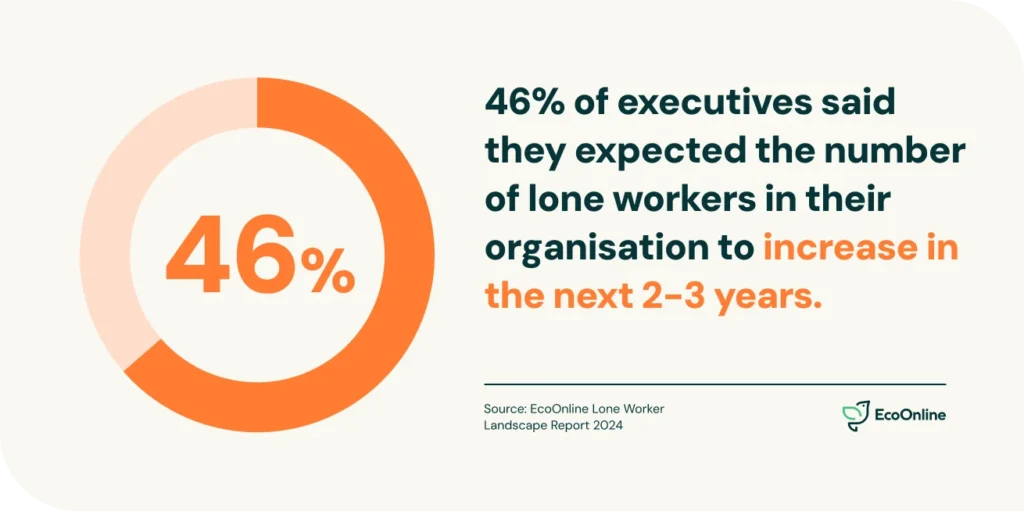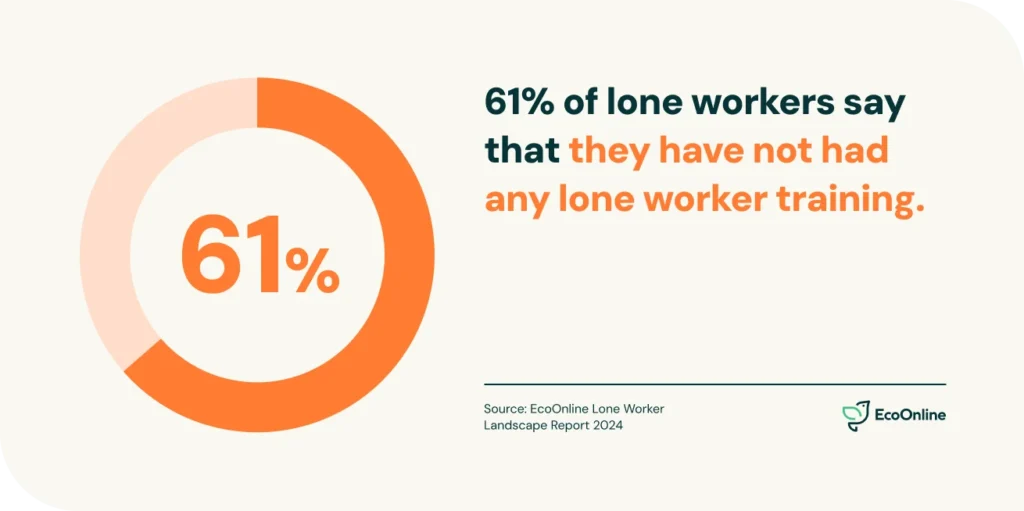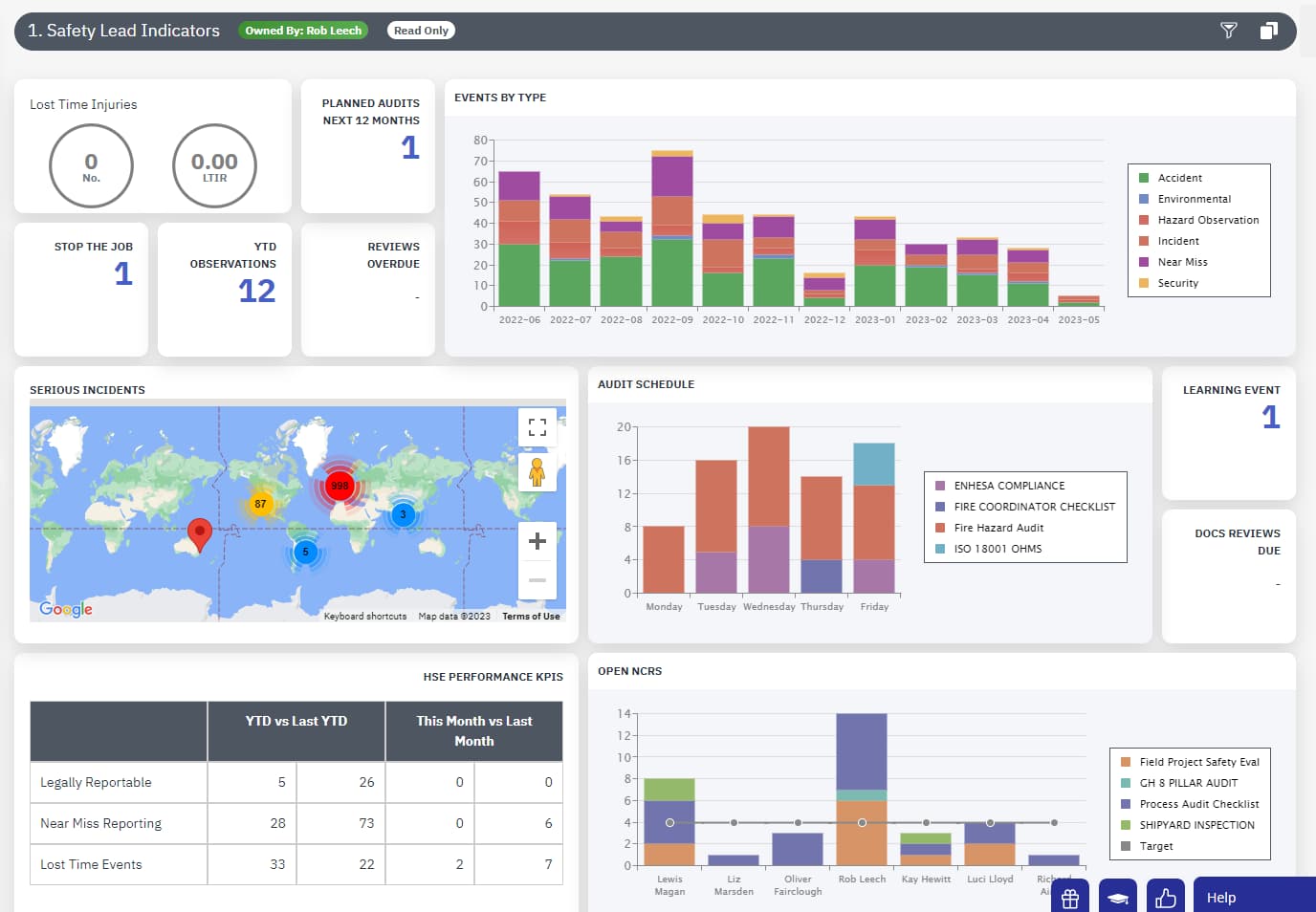Preventing isolation: Ensuring the safety of your frontline lone workers

If you want to ensure the safety of your lone workers, the first step is knowing who and where they are.
Sounds simple enough, right?
Not always. How do you track potentially hundreds of people in multiple locations? These employees may not even label themselves as ‘loneworkers’. How can you make sure your safety policies address their needs?
This was the topic of our latest webinar: Preventing Isolation: Ensuring the safety of your frontline lone workers. Heading up our expert panel was Nicole Vasquez, Director at WorthwhileTraining. Nicole has over 25 years’ experience in helping organisations reduce the level of violence, aggression and safety risks for their employees. This includes developing a national program on Managing Conflict and Aggression for frontline staff in the UK’s rail industry.
Joining Nicole on our panel was Ryan Demelo, Director for Product Marketing at EcoOnline. Ryan provided insights from our recent ‘Lone Worker Landscape Report’, in which we surveyed over 1200 lone workers and executives on the current challenges they face.
Finally, our panel also featured Ryan Obsuszt, a specialised seller for EcoOnline’s Lone Worker solution. Ryan O. took us through some real-world scenarios of lone working with EcoOnline customers.
In this blog post we will go through the key takeaways of the webinar.
CHAPTER 1
Understanding the world of lone working
What’s in a name?
The first issue tackled by our panel was what is meant by the term ‘lone worker’. Workers and their organisations may not use those exact words and they may not even consider themselves in that category. Our panel identified the following additional terms:
- Lone/ Solo working
- Remote working
- Distributed workers
- Home working
- Community workers
- Flexible working
- Agile workers
- Hybrid working
- Location independent workers
Adhering strictly to just one term may cause organisations to miss possible risk to ‘hidden’ lone workers. This is seen in an example brought up by Nicole, wherein an organisation had provided safety control measures for staff visiting clients homes but had nothing in place for the member of staff left alone at the office. Unfortunately, this staff member was attacked in the office by an irate service user.
Official definitions of lone working
Nicole also provided some definitions of home working from governmental agencies in the UK and US:
Health and Safety Executive (UK) Definition:
‘those who work by themselves without close or direct supervision’
Occupational Safety and Health Authority (US) Definition:
‘an employee working alone, such as in a confined space or isolated location’
“Neither definition says, ‘are on their own for 60 minutes, or 3 hours, or the day’. Incidents can happen in the blink of an eye; you only need to be on your own for 5 minutes for something to occur.” – Nicole Vasquez
The UK has further subdivisions of the above definition. Employees may be considered ‘lone workers’ if they are out of earshot or eye line of colleagues, for example in large factories. Employees who are alone when opening or closing up shop/ offices may also be considered lone workers, at least for a period of time. The same can be said for cleaning and security staff.
There is also a distinction drawn when it comes to travel. In the UK for example, commuting to work is not considered lone working, but travelling for work or during work hours is.
Working in the community or going into the homes of others also present different risks for lone workers. The risks involved in lone working at home have not been adequately addressed.

CHAPTER 2
The risks of lone working
According to Nicole, lone working itself is not a risk, but it does change the likelihood of an event occurring and the potential level of harm.
For example, in a typical office scenario, you may not be concerned about incidents of violence and aggression if a worker is alone. However, you may be concerned about social isolation from the rest of the team, or stress levels if there are no colleagues to communicate with.
Nicole identifies 3 categories of safety issues for lone workers:
- ‘Traditional’ health and safety issues (slips, trips and falls, being overcome by fumes)
- Violence, aggression and harassment
- Mental health and wellbeing
Watch the breakdown of each of these categories below:
“When someone says to you ‘how are you doing?’, the classic answer is always ‘oh, I’m fine’, and you are absolutely much more likely to stick to that ‘I’m fine’ when you are seeing someone on a screen.” – Nicole Vasquez
How to control the risks of lone working
Here are four key suggestions provided by Nicole for controlling lone working risks:
Involve your lone workers – What do they want and what do they need: these might not necessarily be the same thing. What are your lone workers most worried about?
Embed the controls– Check and stress test, don’t just test on good days.
Train your workers – In the field, your lone workers will only be able to rely on themselves. Tell your workers what controls you are putting in place, why you have them, and give them the skills to assess risk on the spot. Lone workers need to be able assess risk as it changes – even stopping work if needbe.
Continuous revisiting and revision – Risks change, people change, and your organisation must be able to respond.
CHAPTER 3
Why is lone working rising up the agenda?
To explain why the issue of lone working is coming to the forefront, Ryan Demelo explored some of the findings from our recent report: ‘Lone Worker Landscape Report 2024’:
The number of lone workers is expected to increase
Nearly half (46%) of executives surveyed said they expected the number of lone workers in their organisation to increase in the next 2-3 years.

Businesses are starting to respond
64% of organisations are taking lone worker safety more seriously compared to previous years, while 67% of executives said that lone working safety will continue to grow in importance in the coming years.
It’s getting easier to get what you need
63% H&S executives find it easy to get budget for lone worker safety initiatives, compared to 53% in 2021.
…But there are still problems to be addressed
The report also identified a number of areas where organisations are falling down in terms of lone worker safety:
30% of lone workers said that all risk assessments included a lone working question, in contrast to 46% of executives.
This wasn’t the only example of differences between the experiences of lone workers and their executives. 46% of lone workers said the yunderstood the regulatory requirements for lone working either ‘Quite Well’ or ‘Very Well’, vs 91% ofExecutives.
Worryingly, 61% of lone workers say that they have not had any lone worker training. Our panel was in agreement that combining high-quality training with a lone worker solution was a strong way of tackling lone worker safety issues.
How to protect your employees when working alone
Ryan D. also suggested the following control measures for lone workers:
Risk assessments: Focus on a task-based approach to risk assessments. Constantly monitor and test your controls, change them if they are not working. Make sure your lone workers can read and understand risk assessments.
Safety inspections: Conduct frequent and thorough site inspections, as well as pre-use inspections of machinery and plant.
Continuous monitoring: Conduct realtime check ins with lone workers. Make sure your lone workers know the emergency response procedures, and that they are effective and dependable for your employees.


CHAPTER 4
High-risk lone working and prevention planning
Ryan Obsuszt took us through how Ericsson utilises EcoOnline’s StaySafe Lone Worker solution to keep track of their employees no matter the location or time of day, while also going into detail of how our solution works:
Empowering your lone workers
Our webinar finished with a Q&A with the webinar attendees, during which questions around privacy and tracking were a hot button issue. Our panel were in agreed that a lone worker solution shouldn’t encroach on an employee’s life, and they should be empowered to understand why certain measures are necessary for lone working.
This goes back to a point raised by Ryan Demelo, that lone workers must be involved in the risk assessment process as early as possible. Their opinions on what control measures should be in place are a vital part of achieving employee buy-in for your safety practices.
Lone worker solutions like EcoOnline’s StaySafe Lone Worker software offer a practical, easy-to-use tool to engage your employees. Whether it’s accurately trackinglone workers, raising alerts, or improving safety participation, our solution has your organisation covered.













